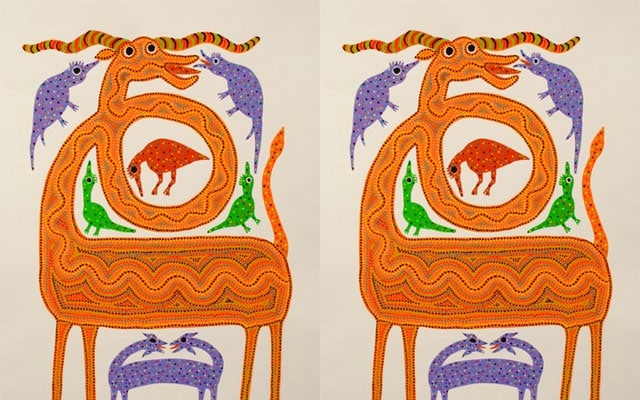Top Notch | India Art Fair director Jaya Asokan: 'I think 2023 will be the best year for the Indian art market'
Top Notch | India Art Fair director Jaya Asokan: 'I think 2023 will be the best year for the Indian art market'

IT’S mere days to the prestigious and glamorous India Art Fair in New Delhi, and one would imagine fair director Jaya Asokan to be doing the headless chicken. I am surprised to say I’ve barely seen a woman more self-assured and at ease than Asokan. This is, after all, her fifth edition of the IAF, earlier as deputy director and the last three years as director. While the pandemic ate up the art fair in 2021, the rise of Omicron postponed and minimised the 2022 edition. This year, with India announced as the world’s fifth-largest economy, Asokan plans to pull out all the stops.
“This is going to be the largest edition of the IAF till date. We have added a fourth exhibition hall. And we have five-six new galleries from India participating for the first time. We also have a studio space that shows digital art created by artists who have been in residence with us; they don’t have gallery support but we think they definitely will get signed up after the fair,” the 44-year-old tells me. “We have scaled up our talks, workshops and performance art. We will also have a zine that focuses on women artists, activists and writers, they have created perforated posters for us that can be used in a protest. They discuss gender, politics, climate change, anything that will ignite the public’s fire,” she smiles.

The IAF is the platform for Modern and Contemporary Art in India and South Asia. It takes place from February 9 to 12 at the NSIC Exhibition Grounds in New Delhi. It’s far more stylish than a fashion week, since serious buyers show up here dripping in luxe labels. It’s far more erudite than a lit fest, since suffering upcoming artists are far more poetic than celebrity authors. The fair has become a great think tank for curators, artists, collectors and voyeurs, all interested in a cultural chronicle of the country and the world at large.
Asokan, the young woman at the centre of it, has built a career dedicated to art and design. After studying Fine Art in Chennai (she prefers to call it “Madras”, she says), she did an undergrad degree in Art History and then followed it up with graphic design at Parsons School of Design in New York. She worked for eight years in computer-aided textile design for a company that sold to Barneys and Bloomingdale’s. Excited by the murmurs of India’s growing art scene, she then shot an email to auction house Saffronart, and ended up working with Minal and Dinesh Vazirani’s superb venture for another eight years. “It was such a small team then so we did everything, from cataloging to art advisory and client relations. The Contemporary artists’ market had just picked up. This is just before the Lehman Brothers crash when Masters and Contemporary artists were equal. I even set up the jewellery vertical for Saffronart,” she says. Asokan is married to a senior advocate and has a seven-year-old son. All three are passionate about art, she says.

At the IAF, Asokan has ensured the fair is not just about the four days it pops up each year by keeping the programming active all year around. “We do smaller events in Baroda and Chennai, we also did something at the Kochi Biennale and Serendipity in Goa. We do want to go pan India, and have our voice heard everywhere,” she explains.
Like the rest of the art and interiors world, the pandemic was a time for success, with people not spending on travel or other luxuries. “I think it gave artists to sit back and reflect, and bring out even greater work. From a market perspective, it was great too. The art market is usually such an older beast and only caters to the top five percent of collectors. But we were so happy to see so many new buyers. There is a very strong domestic demand now, and I think 2023 will be the best year for the Indian art market,” she avers.
Asokan believes the greatest bugbear that’s stalling young art from getting its due is that there isn’t enough mentorship. “The younger artists are brilliant, but they don’t know how to write a brief or present themselves to galleries. This can change through peer programs which handhold the younger artists on the how-tos of the trade,” she says. “Younger artists have such a uniquely Indian voice.”

Art for investment, or art for pleasure: what does she recommend to her buyers. “For me, it has to be an emotional decision. But whether you are looking to invest or decorate, it’s important to do a little legwork and get some knowledge first. What is an “investment piece” anyways, there are no guarantees,” she laughs.
Asokan loves that almost no home in India is without art, even if it’s calendar art. “Whether it’s art or craft, we have such an enduring tradition with making things by hand to decorate our homes,” she says.
Namrata Zakaria is a seasoned writer and editor, and a chronicler of social and cultural trends. Her first book, on late fashion designer Wendell Rodricks’ Moda Goa museum, is due to be published shortly. Zakaria is especially known for her insider’s take on fashion, luxury and social entrepreneurship in India. Her writing is appreciated for shaping opinions, busting myths, making reputations and sometimes breaking the odd career. Zakaria is also involved in putting together philanthropic efforts in the field of economic and environmental sustainability.
Read all the Latest News, Trending News, Cricket News, Bollywood News, India News and Entertainment News here. Follow us on Facebook, Twitter and Instagram.
What's Your Reaction?



























































